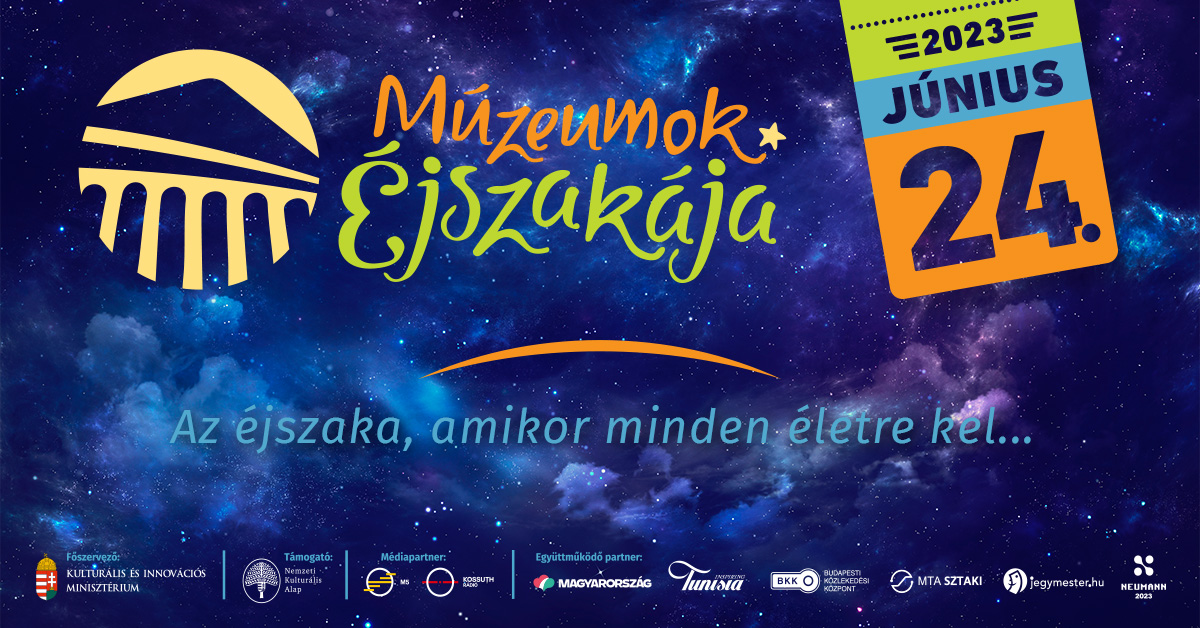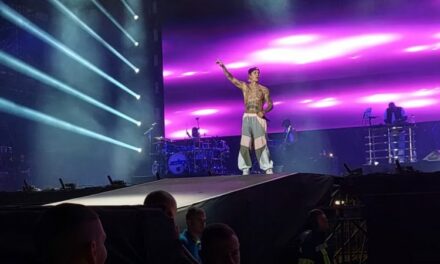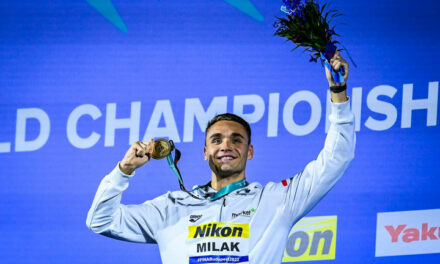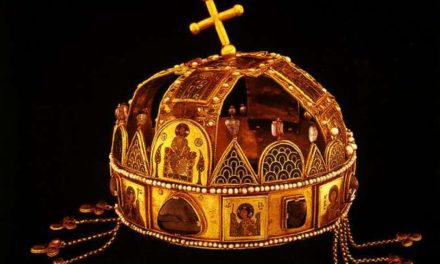Those who turn up on the night of surprises can even program or mix a potion, make a thread figure, watch a gladiator fight and even get on the horse train.
On Saturday, June 24, 442 institutions across the country are waiting for those interested with more than 2,200 programs on the Night of the Museums. Those who turn up on the night of surprises, in addition to the many permanent and temporary exhibitions, performances and concerts, can even program or mix a potion, make a thread figure, watch a gladiator fight and get on the horse train. Anyone who is willing to travel can see our first written language memory, even where it was once guarded. Here is a selection of the special and interesting programs, without the need for completeness.
The featured location of this year's Night of Museums program series is the 2023 European Capital of Culture, Veszprém.
In the Digital Knowledge Center, visitors can try programming, 3D printing, and build circuits, as well as get an idea of robotics. In the recently reopened Laczkó Dezső Museum, an exhibition of the paintings of Balaton painter József Egry opens, while those interested in the city's history are invited to investigate the history of the city in the county archive, where the hall of the building is transformed into an escape room.
In the Ethnographic Museum, they play with motifs, guests can learn about motifs, create motifs and be inspired by motifs. There is an opportunity to paint, draw, basket weave, and write, visitors can work with art objects with the help of professionals, listen to music and even dance. By the end of the evening, it will be clear to everyone why it is an eternal trend to research motifs, to build from motifs and with motifs.
In connection with the Roma culture, in addition to teaching singing and dancing, kanna workshops are also held, the heroes of gypsy tales can be brought to life from thread, and the most skilled can button themselves into a comic book. In the museum, they also thought of the youngest and their parents:
the children's theater developed by the Hungarian Theater in Pest visits the Museum of Ethnography.
The duration of the puppet performance is adapted to children and lasts 20-25 minutes, which ends with a joint game with the actors.
In the Hungarian National Archives' Bécsi kapu tér palace, the timeless and changing trends are in the center of attention in order to show: how different influences influenced our culture, how they influenced later ages. In addition to traditional building tours and document presentations, this year the institution is therefore focusing on the digital archive and the legacy of János Neumann, which they are trying to present through interactive programs and their digital tools. In addition, those interested in historical documents can also take a look at the restorers' workshop.
The Golden Eagle Path Museum, founded in the 18th century, is also located in the Buda castle district, where visitors can enjoy extremely exciting programs.
Under the title "Charm and Potion", you can learn about the history of medicine making.
In the old pharmacy - which may once have functioned as an alchemist's workshop - there will also be a presentation of healing and essential oils.
In the MNM Semmelweis Museum of Medical History, located next to the Castle Bazaar, the secret world of India takes center stage. You will be able to try some basic yoga exercises, under the title "Asceticism and love" you can listen to details from classical Indian literature with sitar accompaniment, and we will also talk about India's erotic sculpture. Visitors can also experience some of the scenes from the movie "Night at the Museum", as the institution offers guided tours with flashlights from 12:30 at night.
In the Skanzen in Szentendre, the theme is also built around love and courtship: they organize dance parties, picnics, and you can also try out love divination.
In the newest unit of the institution, in the small town of Székely, visitors are welcomed by attractions who can not only admire the buildings, but also try on clothes from the turn of the previous century. In addition to cakes and black coffee, you can also play billiards in the café.
At the Hungarian Money Museum and Visitor Center, we can step back into the past from the future (or perhaps from the present?): guests are greeted by a robot, Pengőr, at the entrance. One of the latest collections takes visitors into the history of currency: we can see what people on each continent, in a bygone culture, accepted among themselves as currency, from the walrus tooth to the boomerang. On a giant touch screen – among many other things – you can see a digital copy of the first Hungarian forint,
and those with good strength can lift a twelve-kilogram gold block worth HUF 290 million.
In the Aquincum Museum and Archaeological Park, we can jump back in time thousands of years, to the time when a Roman legion was still stationed in the northern part of Óbuda. There will be a gladiator fight, a weapons and costume show, a Roman beauty salon, a barbarian-Roman "fusion" show kitchen, a three-course "stomach history" from the migration period, an ancient wellness and astronomy show, as well as divination from tea herbs. In the evening, torchlight guided tours start alongside a fire juggling show. The concerts will coincide with one another at the House of Hungarian Music: the Budapest Improvisers Orchestra (BIO) will begin at 6:30 p.m., followed by the Várallyay Petra Trio and the Borbély Mihály Quartet.
In the Fradi Museum, there are also special things waiting for those who are interested and football fans: Ferencváros experienced the cup spring after 48 years, and commemorating the success, the journey in the Europa League is presented in the framework of a temporary exhibition.
The equipment of the players will also be visible. The Ferencvárosi Gymnastics Club can (also) have an extremely successful season behind it this year, its divisions have enriched the collection of the Fradi Museum with numerous trophies. During the Night of the Museums, they provide the opportunity for fanatics to see the trophy crop together and take photos.
In the Hungarian Railway History Park, more than a hundred railway vehicle curiosities can be seen, including fifty rare locomotives and other railway vehicles, passenger and freight cars, ski cars, manual and motorized locomotives. Those who visit the park can take a free night trip on the horse-drawn train, and (for a separate interactive ticket) you can also travel on the Czajka sled, garden railway or steam locomotive.
The Aeropark Flight Museum starts a building tour at Ferihegy Terminal 1, where the younger generation can also experience
what air transport was like at that time, when György Korda's famous song, Reptér, was born.
Those interested in the profession and aviation can get a glimpse into the life of flight attendants on board a Tu-154 aircraft. After night falls, visitors can get to know the operation of the airport as part of the night airport walk. The braver ones can take a few laps on an airport fire truck, and the most skilled can even drive a passenger transport using a simulator.
Those who experience the Night of the Museums while on holiday in Balaton should visit the renovated Bencés Abbey in Tihany, where you can learn about the age of the abbey's charter. The most well-known treasure of the period, and also Hungary's first surviving written linguistic record, is the founding letter of Tihany, which dates from 1055, and among its lines you can read "Feheruuaru rea meneh hoduutu rea", i.e. the sentence for the war journey to Fehérvár.
A spectacular accompanying program is organized around the precious document:
during the program called "Time gate to the 11th century", the groups can first listen to a short presentation about the charter of Tihany and its time in the visitor center, and then they can hear 11th-century church music in the candlelit abbey church.
Afterwards, you can meet King András I and his knights in the inner courtyard of the monastery, and finally the Benedictine Fathers will present their first Hungarian diploma. The monks also offer guests their ancient bread, as well as abbey wines and syrups.
Emperor Tamás
Featured image: muzej.hu












